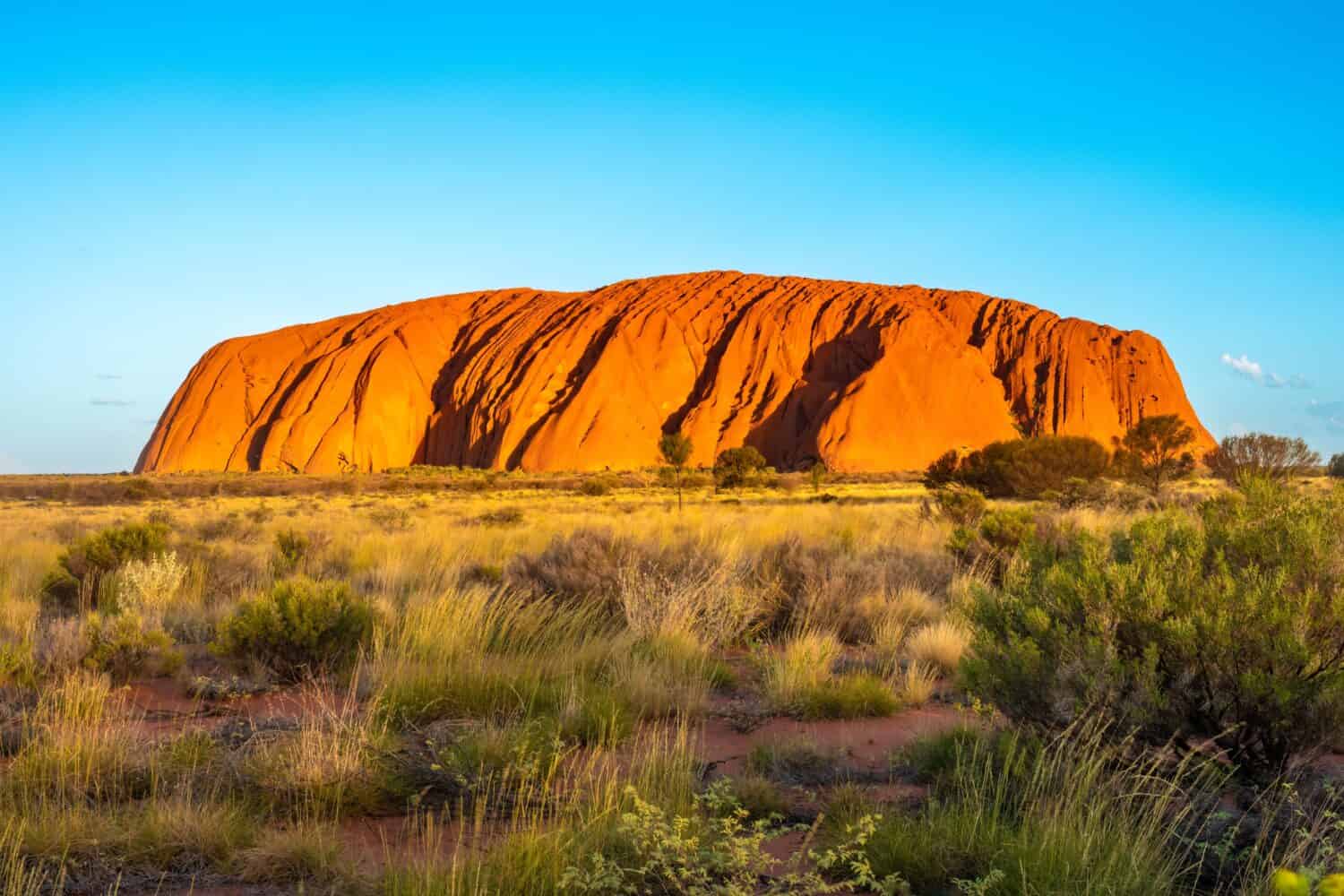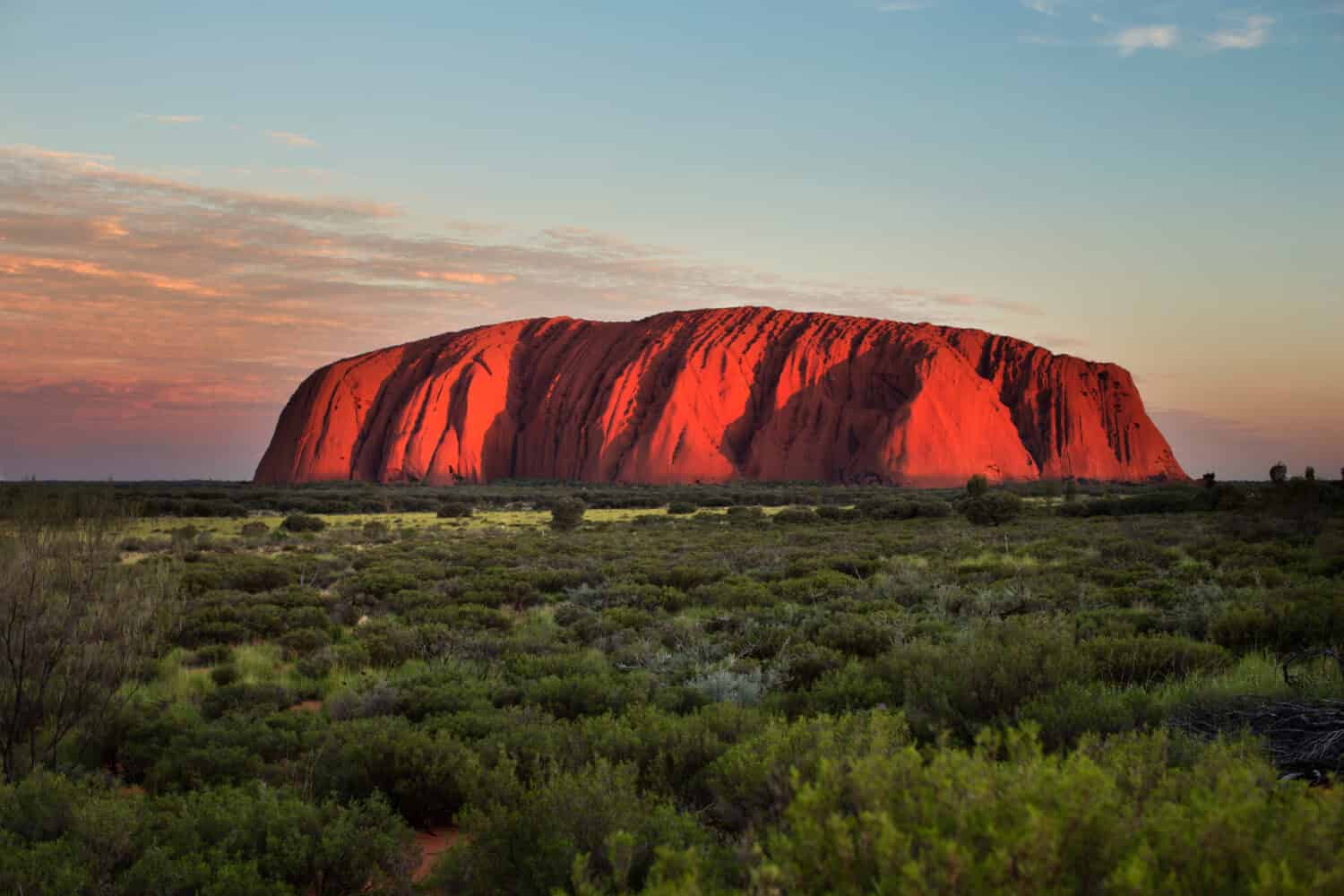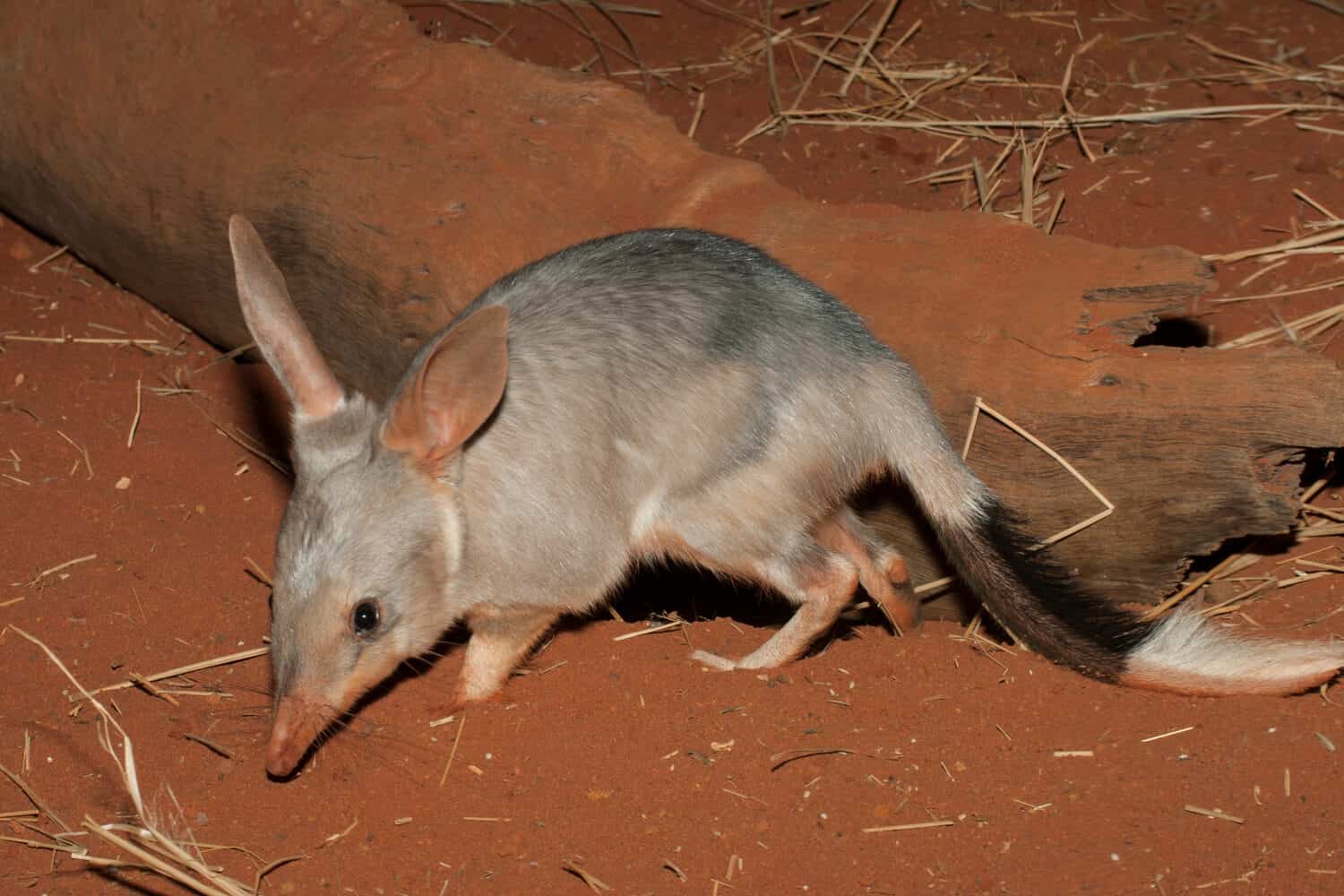Introduction
Australia, or “the land Down Under,” is located near Asia in the Southern Hemisphere. The continent has a land area of nearly three million square miles, the smallest of all seven continents. Originally a part of the Gondwanaland continent, Australia formed after breaking off from Antarctica around 200 million years ago. The current area was first discovered in 1606 by European explorers and has appeared on maps ever since. Australia is the only continent considered a country, divided into eight states including Tasmania. The continent holds many breathtaking natural features, including the Great Barrier Reef, Kangaroo Island, and the Pinnacles Desert. One extremely unique feature in Australia is Uluru, a massive sandstone formation at the heart of the continent. Keep reading to learn how Uluru was formed and more.
What is Uluru?

Uluru is 2,831 feet above sea level at its highest point.
©LouieLea/Shutterstock.com
In the middle of the Central Australian Desert, Uluru can be found. This massive sandstone formation attracts visitors from far and wide to be captivated by its beauty. Uluru is 2,831 feet above sea level at its highest point. That is taller than the Eiffel Tower! The formation measures over two miles in length and one and a half miles at its widest point. Comprised of red sandstone, Uluru stands out for its unusual color. The color of the rock changes with the days and seasons, glowing deep red at sunrise and sunset.
While Uluru is massive, it is much larger than it appears. Similar to an iceberg, the majority of Uluru’s mass is underground. Uluru extends one and a half miles underground, which is more than seven times its height above ground! The formation is a popular attraction, however, climbing Uluru is strictly prohibited. Climbing the rock was officially prohibited in 2019 after the Anangu people requested that visitors refrain from climbing out of respect for their ancient culture.
How Uluru was Formed

Uluru was formed from eroded sediments.
©LouieLea/Shutterstock.com
Uluru was formed over many millions of years when the continents were shifting. Around 550 million years ago, an ancient mountain range existed in Uluru’s current location. This mountain range formed due to the constant shifting of tectonic plates while Australia was being formed. Without any plant coverage, however, these mountain ranges eroded rapidly. Rivers moved the eroded sediments into an inland sea that is now known as the Amadeus Basin.
These sediments rested so far below the surface of the sea and were under so much pressure that they eventually compressed into hard rock. Tectonic forces continued, stacking layers of hardened sediment on top of one another over millions of years. Eventually, the softer rock surrounding Uluru eroded, revealing the iconic structure. As the rock sat in the desert for many years, the iron-rich minerals in the structure oxidized. This is the cause for Uluru’s unmistakable red coloring, and part of how Uluru was formed.
Uluru’s Tribal Significance

The Anangu people occupied the land where Uluru is located.
©eo Tang/Shutterstock.com
Long before Australia was discovered by European explorers, native people groups inhabited the land. There were more than 500 Indigenous nations throughout Australia sharing over 260 different languages. The Anangu people occupied the land where Uluru is located. This tribe believes in Tjukurpa, the period of time when the world was created. Ancient teachings describe the creation of the world through ancestral beings that moved across the earth. This time is referred to as the “Dreaming” and Uluru serves as a reminder of it. The various markings, caves, and fissures on Uluru symbolize the actions of the ancestral beings to the Anangu people. In fact, it is taught that Uluru was formed by 10 ancestral beings. Each unique feature and region of Uluru is associated with a different story of the ancestral beings, creating a rich cultural history.
Still residing in the Uluru region today, the Anangu people work hard to preserve their sacred culture. They hold various ceremonies in the caves at Uluru’s base and follow the ancient laws and traditions that have been passed down for generations.
Wildlife Near Uluru

The bilby is a small burrowing marsupial native to Australia.
©Ken Griffiths/Shutterstock.com
While Uluru is mainly surrounded by desert, its unique monolith structure makes it a safe haven for many creatures. In addition to its structure, the area is federally protected by preservation laws. This makes the area a safe haven for wildlife free from commercial development and pollution. Here are the animals found in the Uluru region.
Emu
The emu is the second tallest bird other than the ostrich. These creatures are between five and six feet tall and can weigh up to 100 pounds. Similar to ostriches, emus are flightless birds. However, they reach speeds of 30 miles per hour when running. This impressive speed is due to their uniquely-shaped feet, which allow them to push off of the ground and propel themselves forward. Emus live between 10 and 20 years in the wild off of a diet of fruits and insects. Every summer, these birds form mating pairs that last until the fall, producing around 10 eggs. Female emus often mate with more than one male during this season, as the male emu is left to incubate the eggs for eight weeks. These birds are covered in greyish-brown feathers from the shoulders down and have very small wings compared to their long legs.
Thorny Devil
The thorny devil is also called the mountain devil, thorny lizard, and thorny dragon. These lizards are fairly small, measuring eight inches in length and weighing just a tenth of a pound. While they are small, thorny devils have a long lifespan of 20 years. These solitary creatures are most active during the day, getting energy from the hot Australian sun. When they are not active, thorny devils live in self-dug burrows in the sand and dirt. During the months of June and July, the lizards hibernate to avoid cold temperatures.
One interesting fact about these lizards is that they actually change colors with the weather! In colder temperatures, thorny devils have a brown or gray coloring, while they appear orange and yellow in warmer temperatures. These lizards are covered in hard, sharp spines that help defend them from predators. When a larger animal tries to swallow a thorny devil, its painful spines usually cause the animal to spit it out. They also can roll themselves into a ball and stick out a “false head” that confuses predators in times of threat.
Male and female thorny devils usually mate between the months of August and December. Mating produces between three and 10 eggs that are placed in a nesting burrow a foot underground. These eggs hatch around four months after the mating occurs.
Bilby
The bilby is a small burrowing marsupial native to Australia. They are fairly scarce in the wild but are prominent in the Uluru region. These creatures are distinguishable by their long noses and bluish-grey fur. They also have long, hairless ears that are reminiscent of rabbits, and white underbellies. Male bilbies measure two feet in length and weigh five and a half pounds. Female bilbies are about half the size of males and also have a backward-facing pouch that carries their young. Unlike many other animals, bilbies breed year-round. Females will often have up to four litters per year. Two weeks after mating, between one and four joeys are born. The offspring then climbs into the mother’s pouch where it grows for the next 80 days.
These marsupials live around seven years in the wild, surviving off of seeds, grasses, fruits, and small animals. Bilbies live alone in burrows with multiple sections in order to avoid heat and escape from predators. These sections can also serve as nurseries for their young. Bilbies are nocturnal, only emerging from their burrows at night to hunt for food and find a mate.
The photo featured at the top of this post is © iStock.com/phastflyer
Thank you for reading! Have some feedback for us? Contact the AZ Animals editorial team.






